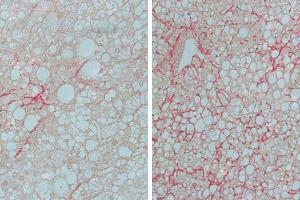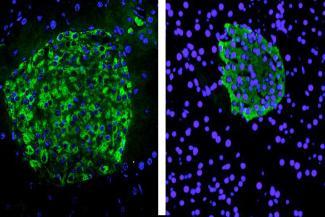Metabolic diseases are rampant in the modern societies. Recent research has found a connection between poor sleep quality and progression of liver disease, type 2 diabetes and weight gain.
Studies in Dobrian Lab, working with the Sanford Lab, are designed to determine if fragmented, or broken, sleep can worsen illnesses like diabetes and liver disease. The research focuses on tiny particles called extracellular vesicles that travel from cell to cell. Once thought of simply as tiny garbage collectors, the extracellular vesicles are now believed to carry messages and critical material from cell to cell like a microscopic postal system.
The researchers are focused on understanding how organs communicate via the extracellular vesicles, and how sleep can impact these messages.

 Compromised Insulin Production
Compromised Insulin Production